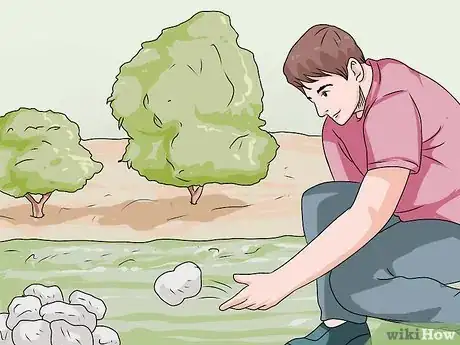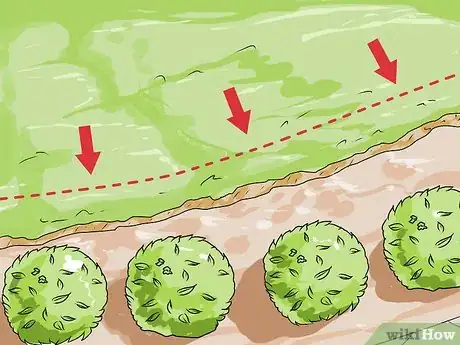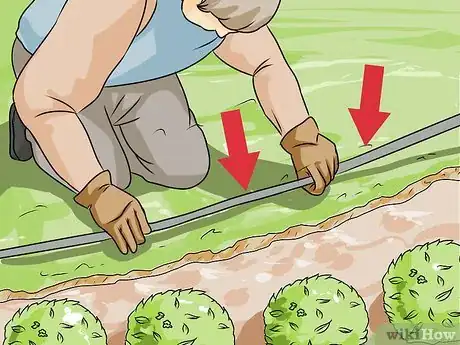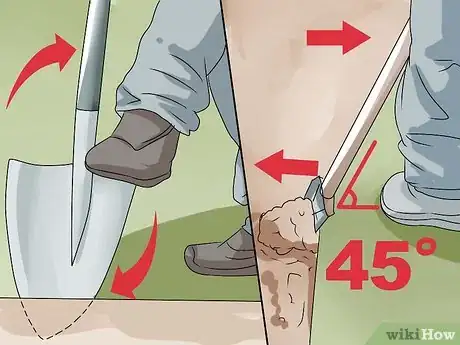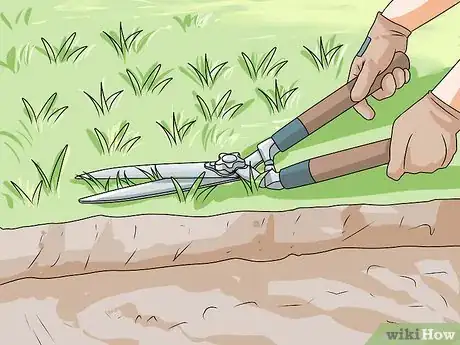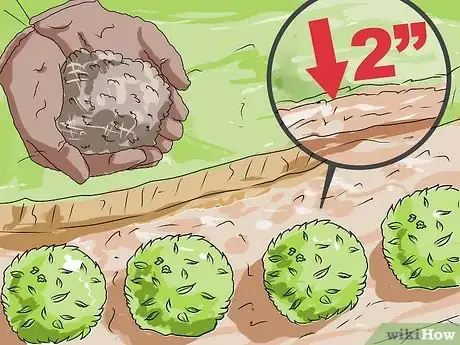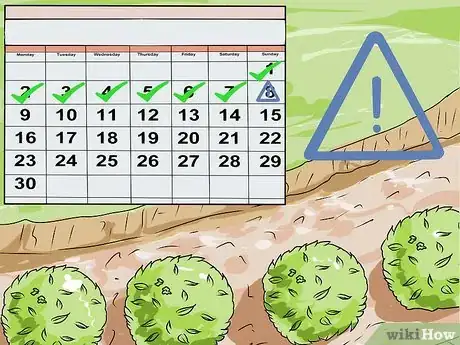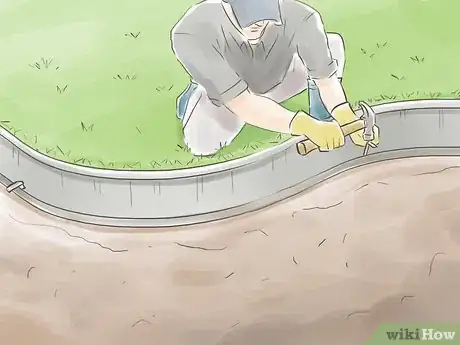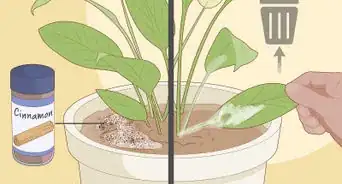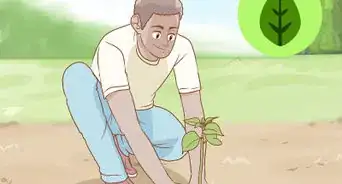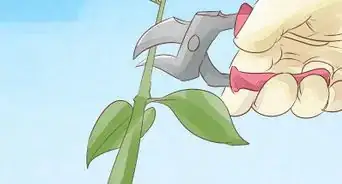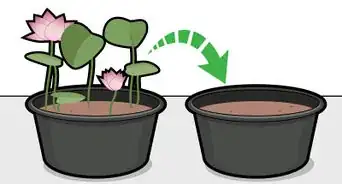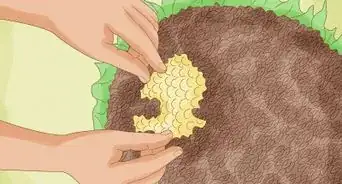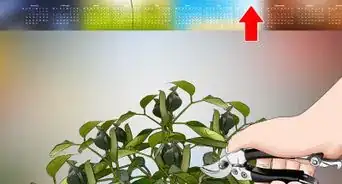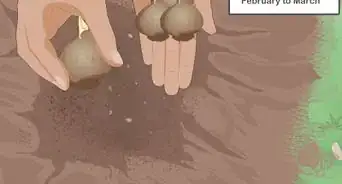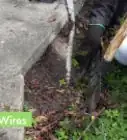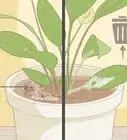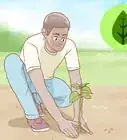This article was co-authored by Mike Garcia. Mike Garcia is a Licensed Landscape Contractor and the Founder of Enviroscape LA, a full-service landscape design and construction firm in Los Angeles, California. With over 30 years of experience, Mike specializes in sustainable landscape practices. Mike holds an Ornamental Horticulture degree, C-27 Landscape Contractor and D-49 Tree Service Contractor licenses, and Permaculture Design, California Naturalist, International Certified Professional Pond Contractor, and Pond Building certifications. He is one of eight Internationally Certified Pond Builders in the world. Enviroscape LA has won landscape and water feature awards from the International Professional Pond Contractors Association (IPPCA), National Association of Pond Professionals (NAPP), and the California Landscape Contractors Association (CLCA). Mike is a past president of the CLCA and currently serves on their local Board of Directors. Enviroscape LA has been featured in PONDS USA Magazine, Pond and Garden Lifestyles Magazine, and the Los Angeles Times. Mike has appeared on Extreme Home Makeover, HGTV's Landscapers Challenge, and A & E's series Fix That Yard.
This article has been viewed 74,870 times.
Edging a flower bed – creating a physical boundary between a bed and a lawn – can make your yard neater, increase the visual appeal of your garden, and keep weeds at bay. You can create an attractive edge for your flower bed with simple materials and no complicated tools.
Steps
Planning and Preparing for the Edging
-
1Start by removing existing edging material, if there is any. If there are borders around your flower bed made of plastic, metal, or some other material and you no longer want to use them, pull them carefully out of the ground. Discard this old material.
- If you cannot pull this up by hand, try working a small hand trowel or pry bar under the bottom edge and levering it out. Sometimes the edging is anchored with stakes, so be sure to remove them first.
-
2Decide where you want the edge line to be. If there is an existing border, and you want to keep the edging where it is, then you are ready for the next step. If you want to change where an existing border is positioned, or if you are making a completely new one, then you will need to mark on the ground where you want the border to be. Straight lines can be fine. Many people prefer curved edges, however, and they may make your flower bed look bigger. [1]Advertisement
-
3Make a guide to follow when you start cutting the actual edge. You can use a garden hose, string, or chalk.[2] Put the hose or other marking material on the ground where you want the actual edge to be.
Creating the Edge
-
1Use a sharp tool to cut into the dirt and mark the edge. For best results, use a half-moon-shaped edging hand tool on a long handle. If you'd rather not buy a new tool, use a sharp trowel or spade. A long bladed knife (e.g. sharpened dinner knife) is also very effective.
- Follow along the existing edge, if applicable, or the line you have marked out with the hose or other material.
- Cut down 4-6 inches into the soil.
- Hold the tool firmly, push it into the sod, then use a sawing motion to avoid any stones in the soil.
- Cut all the way down along the line marking where you want the edge to be.
-
2Remove some of the dirt. Push a trowel or spade into the line you have cut in the soil, then pull toward yourself at a 45 degree angle. Scoop away the dirt that is pushed up and discard. The goal is to create an edge that goes down from the lawn a few inches at a 90 degree angle. Repeat this step all the way along the line you have cut in the soil to mark the edge.
-
3Slope the soil in the bed upwards and away from the base of the edge. This will help keep your flower bed maintained. At the same time, it will help to visually define the edge even more.
Maintaining the Edge
-
1Use shears to trim the grass along the edge. This will give you a very exact edge and improve the look of your flower bed. You will probably have to repeat this step periodically during the growing season if you want to keep the edge perfectly trimmed.[3]
- You can use a weed whacker or a gas powered edger instead.
-
2Spread a 2-3 inch thick layer of mulch from the edge to your flowerbed. This will deter weeds, and keep your edged bed neat. It will also help to draw attention to the contrast between your lawn and the flowerbed, increasing its aesthetic appeal.
- If the flower bed is not overgrown, consider installing weed fabric around the plant before adding mulch.
-
3Check the flower bed periodically to keep the edge defined. Over time, your edge may become uneven due to rain, wind, animals, etc. If this happens, use a spade or trowel to cut through any uneven patches and remove the excess dirt. A good time to do this is in the spring at the start of the growing season.[4]
-
4Install a new border edging. If desired, you can install a border around the flower bed to keep the edge defined. This can be a simple plastic or metal sheet, stones, stacked flagstone, or any solid barrier of your choice.[5]
Expert Q&A
Did you know you can get expert answers for this article?
Unlock expert answers by supporting wikiHow
-
QuestionWhat material can I use to make an edge for my flower bed?
 Mike GarciaMike Garcia is a Licensed Landscape Contractor and the Founder of Enviroscape LA, a full-service landscape design and construction firm in Los Angeles, California. With over 30 years of experience, Mike specializes in sustainable landscape practices. Mike holds an Ornamental Horticulture degree, C-27 Landscape Contractor and D-49 Tree Service Contractor licenses, and Permaculture Design, California Naturalist, International Certified Professional Pond Contractor, and Pond Building certifications. He is one of eight Internationally Certified Pond Builders in the world. Enviroscape LA has won landscape and water feature awards from the International Professional Pond Contractors Association (IPPCA), National Association of Pond Professionals (NAPP), and the California Landscape Contractors Association (CLCA). Mike is a past president of the CLCA and currently serves on their local Board of Directors. Enviroscape LA has been featured in PONDS USA Magazine, Pond and Garden Lifestyles Magazine, and the Los Angeles Times. Mike has appeared on Extreme Home Makeover, HGTV's Landscapers Challenge, and A & E's series Fix That Yard.
Mike GarciaMike Garcia is a Licensed Landscape Contractor and the Founder of Enviroscape LA, a full-service landscape design and construction firm in Los Angeles, California. With over 30 years of experience, Mike specializes in sustainable landscape practices. Mike holds an Ornamental Horticulture degree, C-27 Landscape Contractor and D-49 Tree Service Contractor licenses, and Permaculture Design, California Naturalist, International Certified Professional Pond Contractor, and Pond Building certifications. He is one of eight Internationally Certified Pond Builders in the world. Enviroscape LA has won landscape and water feature awards from the International Professional Pond Contractors Association (IPPCA), National Association of Pond Professionals (NAPP), and the California Landscape Contractors Association (CLCA). Mike is a past president of the CLCA and currently serves on their local Board of Directors. Enviroscape LA has been featured in PONDS USA Magazine, Pond and Garden Lifestyles Magazine, and the Los Angeles Times. Mike has appeared on Extreme Home Makeover, HGTV's Landscapers Challenge, and A & E's series Fix That Yard.
Licensed Landscape Contractor
-
QuestionIs it best to edge (and lay edging barrier stones) before adding weed fabric, plants, and mulch to the area? Or can laying the edging stones be done after planting, mulching, etc.?
 Community AnswerPlants, fabric, edging, and finally mulch will give a more professional look to your bed. If you try adding the edging after, it will look like it was added after and not blend as well. Plus, adding after means adding even more mulch. Use the edging to anchor your fabric.
Community AnswerPlants, fabric, edging, and finally mulch will give a more professional look to your bed. If you try adding the edging after, it will look like it was added after and not blend as well. Plus, adding after means adding even more mulch. Use the edging to anchor your fabric. -
QuestionDo I have to use edging to contain a flower bed?
 Community AnswerNo, but it may stop the soft edge of the lawn from disintegrating over time. Also, the top of the edging should be flush with the lawn so that the lawn can be mowed all the way to the edge without the need for trimming.
Community AnswerNo, but it may stop the soft edge of the lawn from disintegrating over time. Also, the top of the edging should be flush with the lawn so that the lawn can be mowed all the way to the edge without the need for trimming.
Things You'll Need
-
Half-moon garden edging tool
- Or Sharp garden hand trowel or spade
- Material for marking the edge line, such as a garden hose or marking paint
References
- ↑ http://www.gardening.cornell.edu/homegardening/scene74a6.html
- ↑ Mike Garcia. Licensed Landscape Contractor. Expert Interview. 20 November 2020.
- ↑ http://www.finegardening.com/perfect-edges-your-beds-and-borders
- ↑ http://www.amestruetemper.com/projects-and-solutions/detail.aspx?id=34
- ↑ Mike Garcia. Licensed Landscape Contractor. Expert Interview. 20 November 2020.
- ↑ Mike Garcia. Licensed Landscape Contractor. Expert Interview. 20 November 2020.
About This Article
To edge a flower bed, start by using a sharp knife, trowel, or spade to cut 4 to 6 inches into the dirt to mark the edge. Next, remove some of the dirt by pushing the tool into the cut line and pulling it toward yourself at a 45-degree angle. Then, to keep your edge defined, you can install a plastic or metal border around your flower bed. Finally, use shears to trim the grass along the edge to keep the lines neat. To learn how to install a new boarder edging, keep reading!
